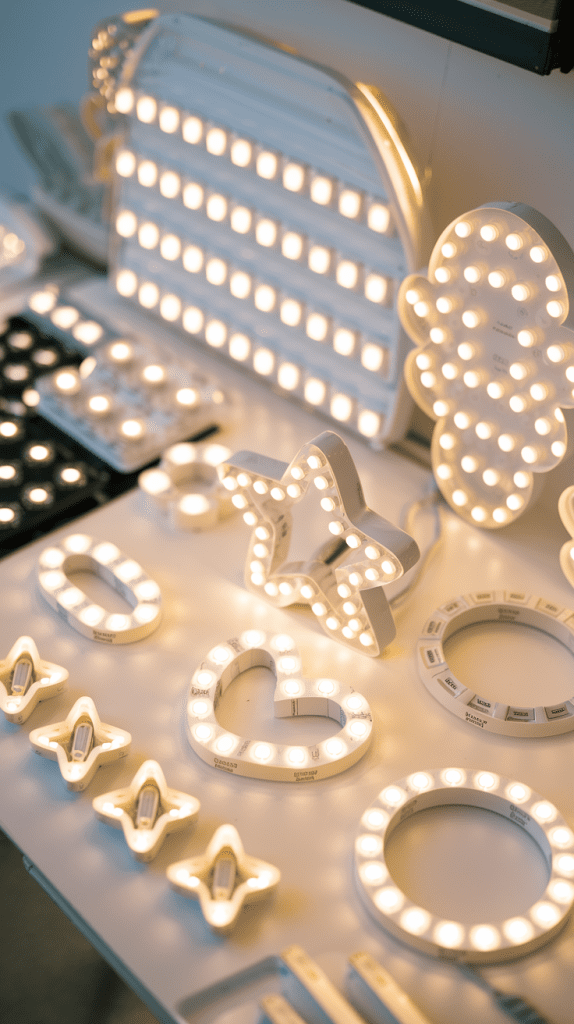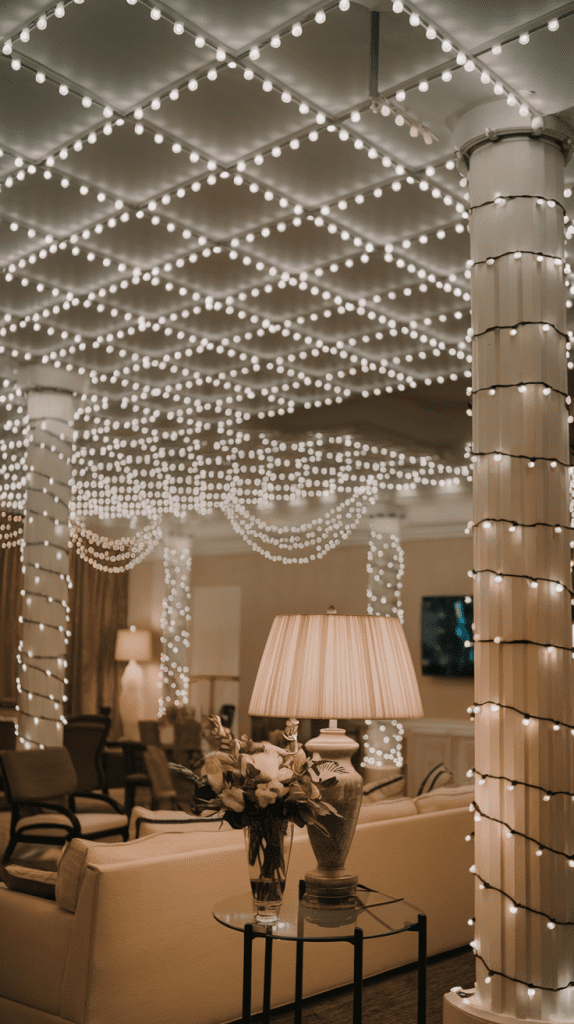Illuminating Your Space: How Many LED Lights Per Room?
Lighting your home effectively can dramatically improve its ambiance and functionality. But figuring out the right number of LED lights for each room can feel overwhelming. This comprehensive guide tackles the question, How many led lights per room?, providing you with the knowledge to illuminate your home perfectly. We’ll delve into various factors influencing lighting…
Lighting your home effectively can dramatically improve its ambiance and functionality. But figuring out the right number of LED lights for each room can feel overwhelming. This comprehensive guide tackles the question, How many led lights per room?, providing you with the knowledge to illuminate your home perfectly. We’ll delve into various factors influencing lighting needs, different types of LED lighting, and practical tips for achieving optimal illumination in every space.
The size of your room is the most fundamental factor. Larger rooms naturally require more light sources to achieve even illumination. A spacious living room will need significantly more lights than a small bathroom. The layout also matters; an open-plan kitchen-dining area will need a different lighting strategy than a series of smaller, separated rooms. Consider the number of corners and recesses, as
these might require additional spotlights or accent lighting.
How Many LED Lights Per Room?
Types of LED Lighting

Ambient Lighting
This provides overall illumination for the room. Think of your main ceiling lights or larger floor lamps. They set the general brightness level and are essential for everyday tasks. For a living room, this might involve a central chandelier or recessed lighting fixtures.
Task Lighting
This focuses light on specific areas for particular tasks. In a kitchen, this could mean under-cabinet lighting for food preparation or a pendant light above an island. In a home office, a desk lamp provides focused illumination for working.
Accent Lighting
Accent lighting highlights specific features or creates ambiance. Track lighting can showcase artwork, while strategically placed wall sconces can add warmth and sophistication. This is often used to create visual interest or draw attention to architectural details. A dimmer switch can greatly improve the versatility of accent lighting.
Calculating the Number of LED Lights

Lumens: The Key Measurement
Instead of focusing solely on the number of lights, pay more attention to lumens. Lumens measure the total amount of light emitted by a source. A higher lumen rating means a brighter light. For example, a 60-watt incandescent bulb typically produces around 800 lumens, while a comparable LED might produce the same brightness with only 10-12 watts.
Calculating Lumens Per Square Foot
A general rule of thumb is to aim for 1.5-3 lumens per square foot for general ambient lighting. For task lighting, you’ll need more lumens concentrated in the work area. Measure your room’s dimensions (length x width), calculate the square footage, and then multiply by the desired lumens per square foot to determine the total lumens needed.
Factors Affecting Light Output
Ceiling Height
Higher ceilings require more powerful lights or more lights to adequately illuminate the space. The light needs to travel further to reach the floor, leading to some light loss. Consider using strategically placed uplighters to bounce light off the ceiling and improve the distribution.
Wall Color
Darker wall colors absorb more light, requiring a higher lumen output to achieve the same brightness as lighter-colored walls. Light colors reflect more light, making the room feel brighter with fewer light sources.
Choosing the Right LED Bulbs
Color Temperature (Kelvin)
Color temperature is measured in Kelvin (K). Lower Kelvin values (2700K-3000K) produce warm, yellowish light suitable for living rooms and bedrooms. Higher Kelvin values (5000K-6500K) provide cool, bluish light often used in kitchens and bathrooms.
CRI (Color Rendering Index)
CRI measures how accurately colors appear under a light source. A higher CRI (above 80) is preferable for accurate color representation, especially important in areas where accurate color perception is vital, like a kitchen or art studio.
Different Lighting Styles
Recessed Lighting
These lights are installed directly into the ceiling, offering a clean, minimalist look. They are highly efficient in distributing light and are suitable for most rooms.
Pendant Lighting
Hanging lights that provide both ambient and accent lighting. They can be used as a focal point in a room, often above kitchen islands or dining tables.
Track Lighting
A versatile system allowing for adjustable light placement. This is ideal for highlighting artwork or creating adjustable task lighting.
LED Light Placement Strategies
Layering Your Lighting
Using a combination of ambient, task, and accent lighting provides the most versatile and effective illumination. This approach caters to different activities and moods in the room.
Light Distribution
Ensure light sources are evenly spaced to avoid dark spots. Avoid placing lights too close together, which can lead to glare and discomfort. Consider the direction of light to reduce harsh shadows and enhance the aesthetic appeal.
Cost and Energy Efficiency
LEDs: The Energy-Saving Choice
LED lights are known for their significantly lower energy consumption compared to traditional incandescent or fluorescent bulbs. This translates to lower electricity bills and a smaller carbon footprint.
Long Lifespan
LED bulbs have a much longer lifespan than traditional bulbs, reducing the frequency of replacements and associated costs. This contributes to long-term savings.
DIY vs. Professional Installation
Simple Installations
Many LED lighting installations are relatively straightforward DIY projects, provided you have basic electrical knowledge and follow safety guidelines. Consult with a professional electrician if unsure or dealing with complex setups.
Professional Expertise
For more complex installations, such as recessed lighting or intricate wiring, it is advisable to hire a qualified electrician to ensure safety and compliance with electrical codes.
Troubleshooting Common Issues
Dim or Flickering Lights
These problems often stem from faulty bulbs, loose connections, or issues with the wiring. Check for loose connections, replace faulty bulbs, and consult with a professional electrician if the problem persists.
Uneven Illumination
If parts of the room remain dark despite having enough lights, try adjusting the positioning of the lights or adding more light sources in those areas. Consider the reflectivity of the walls and floor in your calculations.
Frequently Asked Questions
What are the different types of LED lights available?
LED lights come in various styles including bulbs (A-shape, globe, candle), strips, panels, downlights, spotlights, and more. Each style serves a different purpose and is suitable for different applications. Consider the room’s needs and aesthetic when choosing a style.
How do I determine the appropriate lumen output for my room?
Start by calculating the square footage of your room. Then, use the general guideline of 1.5-3 lumens per square foot for ambient lighting. Adjust this based on the room’s purpose and how bright you want it. Task lighting requires higher lumens concentrated on the work area.
What is the difference between color temperature and CRI?
Color temperature (Kelvin) relates to the light’s appearance, ranging from warm (yellowish) to cool (bluish). CRI (Color Rendering Index) measures how accurately colors appear under the light source, with higher CRI values indicating better color reproduction.
Are LED lights more expensive initially?
While the initial cost of LED lights may be slightly higher than traditional bulbs, the long lifespan and significantly lower energy consumption make them a more cost-effective option in the long run.
How often do I need to replace LED lights?
High-quality LEDs typically last for 25,000 hours or more. This translates to several years of use, often much longer than other types of lighting. However, individual results may vary based on usage patterns.
Can I install LED lights myself?
Many LED installations are straightforward DIY projects, especially replacing existing light fixtures with LED equivalents. However, more complex installations, such as recessed lighting, require electrical expertise and should be undertaken by a qualified electrician.
Final Thoughts
Determining the perfect number of LED lights for your room isn’t about a magic number, but a careful consideration of several factors. By understanding your lighting needs, choosing the right type of LED lights, and planning your light placement strategically, you can transform your home into a beautifully and functionally lit space. Remember to consider lumens, color temperature, and CRI to create the optimal atmosphere for each room. Start with a plan, measure your space carefully, and don’t hesitate to seek advice from a professional if needed. Investing in high-quality LED lighting is an investment in your home’s comfort, efficiency, and long-term value. Let the light shine!

